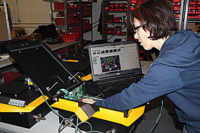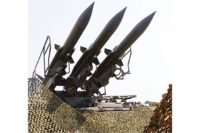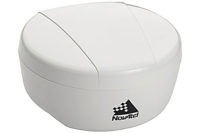Going paperless on the production line has never been easier. A variety of systems are available that allow manufacturers to use visual work instructions to boost productivity and improve quality.
Article Index:
Although paperless systems have been around for more than 25 years, new software tools and mobile hardware platforms, such as low-cost tablets and the soon-to-be-launched Google Glass, provide engineers with more options than ever.
There are numerous benefits to implementing visual work instructions, including cost savings, productivity enhancement, error proofing, real-time change control, operator feedback and traceabilty.
“The most immediate benefit [is] time savings—particularly when it comes to the creation and management of work instructions,” says Brian Sallee, director of business development at Dozuki. “We’ve seen customers reduce the time it takes to create work instructions by up to 70 percent. That equates to a huge cost savings.
“Quality is positively influenced, because workers aren’t required to process as much information on the line,” adds Sallee. “They see, and therefore, can visualize the end goal instantly: less errors, less missed steps.”
“Productivity increases, because the optimal process is always used, even if the model or option is rarely seen,” adds Phil Borland, managing director of VisualFactory. “The correct process is always available, so time is not lost in refreshing memory or working out the process.
“Similarly, because of the added labor flexibility, workers can move workstations easily and work in a controlled process,” Borland points out. “Quality is also greatly impacted by ensuring the correct process is used.”
Visual work instructions incorporate a number of validations to ensure that the correct components, tools, jigs and skills are applied to a process. So, if operators try to work on a process for which they are untrained, the system will automatically prevent work being carried out.
“By standardizing on best processes, you are bringing all employees up to the level of the ‘A player,’” says Kyle O’Reilly, sales and marketing manager at Visual Knowledge Share Ltd. “Rejects drop, because no longer is one person doing something his way while another does it his way. There is only one way to do something [the way that] will result in zero defects.
“A side result of this is an increase in productivity,” contends O’Reilly. “There’s no more wasted time figuring out what is next or fixing mistakes, because everything is right in front of you. [Other benefits include] operator accountability, traceability of all your parts throughout the facility, and live real-time data from the shop floor.”
According to O’Reilly, manufacturers are often attracted to paperless systems because they have no consistency in their processes and need standardization. “Or, they need to optimize creation and maintenance methods for their work instructions,” he explains.
“Paper instructions take forever to create,” argues O’Reilly. “When an update is needed, it takes even longer, and there is a lot of wasted time that occurs between the two. Having something simple, easy and quick is a major selling point of [our] software.”
Why Go Paperless?
A wide variety of manufacturers have gone paperless on their assembly lines in recent years, including Ametek Inc., Bombardier Transportation, Haas Automation Inc., Hypertherm Inc., Manitowoc Foodservice, Spielo International, Tesla Motors Inc. and Volvo Construction Equipment Inc.
“Companies that have a high-volume, or a large number of pages per production order, are [typically] the first to think about using a paperless method,” says John Leibert, president of Factivity Inc. “The technology also appeals to manufacturers that have a lot of temporary workers or non-English speaking operators on their assembly lines.”
“We have a slightly higher density of customers in regulated industries, [such as] aerospace, military, security and medical device manufacturing, where traceability is a key factor,” adds Barry Lucas, president of FFD Inc.
According to Lucas, electronic work instructions are ideal for manufacturers that produce complex products; high-mix, high-volume items; and products with short order-to-delivery cycle times.
“High-mix, high-complexity manufacturers are all looking to shorten the [time needed to get a product] from R&D to manufacturing,” Lucas points out. “By having a closed-loop electronic solution that allows rapid and controlled communication between manufacturing and engineering, revisions can be made almost immediately vs. hours or days using paper-based systems.
“Some manufacturing environments just don’t warrant paperless solutions, particularly in [applications] where [assembly] times take seconds to minutes or processes are highly automated,” notes Lucas. “In these types of environments, we still see laminated paperwork instructions at the manufacturing cells.”
One manufacturer that’s bullish on visual work instructions is Hydro-Air Components Inc., which specializes in hydronic-based heating and cooling products. The company prides itself on its ability to design and assemble custom HVAC equipment with short lead times. This requires a large amount of flexibility on the floor of its Buffalo, NY, plant, and clear communication between engineers and assemblers.
As years of paper drawings began to accumulate, revision control became a major concern in the plant. Operators began to make their own decisions if they couldn’t find the proper documentation.
“They began customizing programs themselves rather than wait for production engineering to provide them the necessary tools to meet production deadlines,” says Andrew Lennartz, chief financial officer. “The time wasted and lack of process clarity began to adversely affect both our delivery performance [and] our product quality.
“Despite the excessive time and money being spent to produce and update production drawings and programs, we found ourselves struggling to keep up with ISO standards,” adds Lennartz. “In addition, there was no formal process for employees to provide feedback on outdated or incorrect drawings and programs, causing inaccurate documentation to linger in the production environment.”
By implementing visual work instructions, Hydro-Air operators were able to easily and quickly view all drawings and revisions made by engineers.
Paper Pushers
Despite all the benefits of paperless production systems, many companies are still reluctant to invest in the technology. In fact, some industry observers claim that fewer than 30 percent of all manufacturers have adopted visual work instructions.
Some engineers are turned off by paperless systems because of the costs associated with transitioning from paper-based work instructions. Indeed, thousands of documents must often be converted or recreated entirely.
“This can be a huge project that requires a lot of resources,” warns Eric Doster, marketing manager at Dozuki. “Many of the companies we work with spend more money on creating and converting documentation to our platform than they do on software licensing fees.”
Typically, younger engineers are more willing to go paperless than their older colleagues. “It’s an interesting time for the manufacturing industry,” says Doster. “Opportunities for innovation abound and we’re seeing an exciting level of initiative from the younger workforce that’s grown up around technology.
“It’s really a generational gap in many regards,” Doster points out. “If you’re used to the flexibility and productivity that comes from a device like a tablet or smart phone, then you get really excited about how tablet-powered work instructions can really benefit assembly operations.
“This allows work instructions to be portable on the plant floor,” says Doster. “In some applications, such as aircraft or construction equipment, assemblers can’t keep climbing down to the ground to look at work instructions.
“We’ve even seen customers using smart phones attached to the operator’s wrist,” notes Doster. “This is a great solution, especially when the product they are building is very large and requires [an assembler] to climb on top of or underneath the assembly.
“We expect to see a lot of interest in Google’s new Glass device,” adds Doster. “We have some customers currently looking into it. However, battery life is a challenge and its display resolution is still an issue.” And, other smart glass options are available, such as the M-100 from Vuzix Corp.
As tablets become more popular, innovative manufacturers are eager to adapt the technology to the plant floor. For instance, at Boeing’s factory in Mesa, AZ, assemblers use Apple iPads and other tablet devices to access work instructions as they build the AH-64D Apache helicopter.
“As the options for Web-based tablet access have mushroomed, so has the desire to take advantage of these different platforms on the shop floor,” says FFD’s Lucas. “We have customers using the iPad and Microsoft Surface, as well as Android-based tablets [such as the Samsung Galaxy].”
Most manufacturers simply encase consumer-grade tablets in rugged cases to protect them from bumps and rough handling. However, industrial-strength tablets are available from companies such as Advantech and Quaduro.
To get the most out of visual work instruction systems, engineers must ask themselves, “How can I improve quality while reducing cost in my manufacturing environment?”
“Many companies aren’t even looking,” claims VisualFactory’s Borland. “They assume it cannot be done, so they keep doing things the same old way.
“Some [engineers] are looking for interactive solid models, because it looks like a cheap way of deploying product knowledge to the shop floor,” says Borland. “We can support this as a reference document, but interacting with a solid model cannot define a standard process.
“Others are looking for ‘documents’ that can be submitted to a centralized document repository,” Borland points out. “Paper on glass gives much better control than paper on the shop floor, but completely misses the point of dynamic process instructions that can cope with hundreds of model variants, in-line data collection and real-time production reporting. We are much happier talking to customers who are looking to implement world-class, lean manufacturing in a simple, standardized and sustainable way.”







